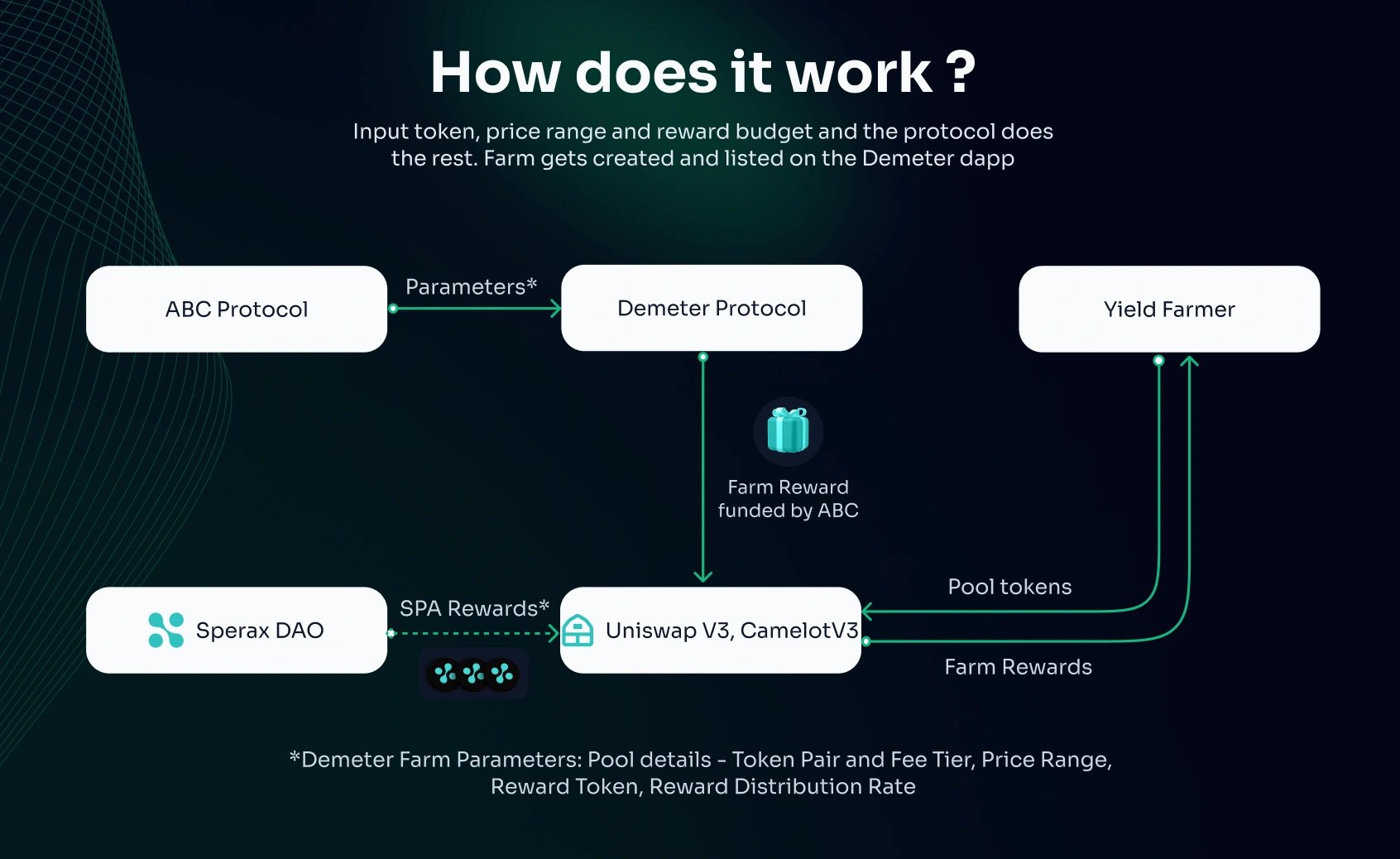위키 구독하기
Share wiki
Bookmark
Sperax (USDs)
Sperax (USDs)
**스페락스(Sperax)**는 사용자를 위한 분산형 금융(DeFi)을 간소화하는 데 중점을 둔 DeFi 생태계입니다. 스페락스 USD 스테이블코인과 Demeter 프로토콜을 포함한 제품들은 DeFi의 일반적인 복잡성 없이 접근 가능한 수익 창출 기회를 제공합니다. 이 플랫폼은 자동화 및 보안을 통합하여 사용자가 위험을 줄이면서 수익을 최적화할 수 있도록 지원하며, 자체 토큰인 SPA를 통해 거버넌스가 처리됩니다. [1]
개요
스페락스(Sperax)는 수익 창출 및 유동성 관리에 대한 사용자 접근을 간소화하는 분산형 금융(DeFi) 플랫폼입니다. 사용자 조작 없이 자동 수익을 제공하는 USDs 스테이블코인을 포함한 제품군을 제공하며, Demeter 프로토콜을 통해 DAO는 분산형 거래소 유동성을 쉽게 시작하고 관리할 수 있습니다. 스페락스는 자체 토큰인 SPA에 의해 구동되는 거버넌스 시스템을 활용하여 커뮤니티가 프로토콜 결정 및 매개변수에 영향을 미칠 수 있도록 합니다. 이 플랫폼은 DeFi 제공에서 자동화, 보안 및 확장성의 균형을 목표로 합니다. [2]
제품
스페락스 USD (USDs)
스페락스 USD (USDs)는 Arbitrum 네트워크의 스테이블코인으로, 스테이킹이나 보상 청구와 같은 사용자 조작 없이 자동 수익을 생성합니다. 목표는 상호 운용성을 통해 주요 블록체인 플랫폼에서 USDs를 사용할 수 있도록 하는 것입니다. USDs를 보유한 사용자는 자동으로 수익을 얻으며, 청구하는 데 가스 수수료가 필요하지 않습니다. 스테이블코인은 더 낮은 거래 비용을 위해 Arbitrum에서 운영되며 화이트리스트에 등록된 암호화폐 자산 바스켓으로 완전히 뒷받침됩니다. USDs는 중앙화된 스테이블코인이나 알고리즘 모델과 달리 100% 담보 모델과 확장성 이점을 결합합니다. 수익은 분산형 금융 프로토콜로 전송된 담보에서 생성되며, 이 수익의 50%는 USDs 보유자에게 돌아갑니다. [2]
민팅 USDs에는 USDC 또는 USDT와 같은 적격 담보가 필요합니다. 담보는 풀링되어 USDs를 민팅하는 데 사용되며, 완전히 담보화되거나 초과 담보화됩니다. 스페락스 DAO는 민팅 수수료와 수익 배분을 관리하며, 수익은 약 7일마다 USDs로 지급됩니다. [2][3]

Demeter 프로토콜
Demeter 프로토콜은 Uniswap 및 Camelot을 포함한 다양한 분산형 거래소에서 운영되며, DAO가 코딩 지식 없이 분산형 거래소 유동성을 시작하고 관리할 수 있도록 합니다. 현재 Uniswap V3 및 Camelot V2에서 인센티브가 부여된 유동성 풀을 생성할 수 있으며, Optimism, Polygon 및 Ethereum과 같은 다른 플랫폼 및 블록체인으로 확장할 계획입니다. [4][5][6]
Demeter는 감사받은 계약 시스템을 통해 기술 지원을 제공하여 DAO의 자체 토큰에 대한 유동성 시작 및 관리를 자동화합니다. 또한 사용자를 유치하는 대시보드에 활성 팜을 나열하여 마케팅 지원을 제공합니다. Uniswap V3의 집중된 유동성을 활용함으로써 DAO는 감소된 슬리피지와 낮은 배출 예산의 이점을 누릴 수 있습니다. Demeter는 복잡한 계약 없이 DAO가 유동성 풀을 시작하는 프로세스를 간소화하고 토큰 지출과 압력을 줄이기 위해 SPA와 Camelot 토큰 모두에서 보상을 제공합니다. [5][6]
Demeter 프로토콜 V2에서는 여러 체인에 대한 접근 방식에 중점을 두었으며, 체인 간 가용성이 제한되어 SPA 및 USDs와의 페어링에 대한 인센티브를 중단했습니다. [5][6]

잘못된 내용이 있나요?
